The Plot Against Modi
Inside the conspiracy featuring Teesta Setalvad, Ahmed Patel and others to implicate the then Gujarat chief minister in the 2002 riots
/wp-content/uploads/2022/07/Theplot1.jpg)
(Illustration: Saurabh Singh)
THEY ARE THE HARMONY entrepreneurs, and they invest in the wretchedness of India, its politics of hate and communal violence. They are here for the dividends of peace, and their secular activism seems to have evolved into a business model. Gujarat after the riots of 2002 has been their favourite destination—and the state’s former chief minister, the current prime minister of India, their permanent bogeyman.
Does their cause have a rotten core?
Journalist and activist Teesta Setalvad’s leading role in a plot to implicate Narendra Modi, who was the chief minister during the riots, as brought out by the Special Investigation Team (SIT), shows the seamier side of so-called civil society activism.
According to what the SIT has revealed about the operation that gathered momentum after the riots and lasted till 2014 when the Manmohan Singh-led United Progressive Alliance (UPA) government stared at certain death, Setalvad allegedly resorted to all the tricks of the trade: abduction, witness confinement, illegally digging up the graves of riot victims, false affidavits, email-hacking…
Throughout, she refused to accept the legitimacy of the SIT. She even treated the cases, which are still under the consideration of the Supreme Court, as examples of human rights violations and wrote to the United
Nations Human Rights Council (UNHRC) in Geneva.
At one stage, as revealed by the SIT, she was allegedly paid for her services in the operation against Modi by fellow Gujarati and the lord of Congress’ dark arts, the late Ahmed Patel. While upholding the clean chit given to Modi in the 2002 riots by the SIT, the Supreme Court, in June, called into question Setavald’s role: “All those involved in such abuse of process need to be in the dock and proceeded with in accordance with law.”
HERE’S A BACKSTORY. Sometime in October 2013, three senior Cabinet ministers of the then UPA government and top party honcho Ahmed Patel met at a house near New Delhi’s Teen Murti Bhavan. There, they were to meet Central Bureau of Investigation (CBI) Director Ranjit Sinha and Special Director Salim Ali. The plan apparently was to discuss how to tighten the legal noose around Modi and his close colleague Amit Shah. The matter pertained to the June 2004 encounter killing of four individuals by the state police that included Ishrat Jahan, a young girl from Mumbra. The 19-year-old was killed in the company of her friend, Javed Sheikh, and two Pakistani terrorists belonging to Lashkar-e-Taiba (LeT). This happened, allegedly, while they were in the custody of Gujarat Police. Jehan had travelled all the way from her hometown near Mumbai. This led a very senior Ministry of Home Affairs (MHA) bureaucrat in the UPA government to state that it was very unusual for a girl from her background, as was the fact that her mother did not file a missing person report for days. His conclusion was that Ishrat Jahan was either roped into the mission on false premises or that she was a wilful participant in what was going on. None of this deterred the four Congress leaders on a mission to thwart Modi who had just been selected as the prime ministerial candidate of the Bharatiya Janata Party (BJP) for the 2014 General Election.
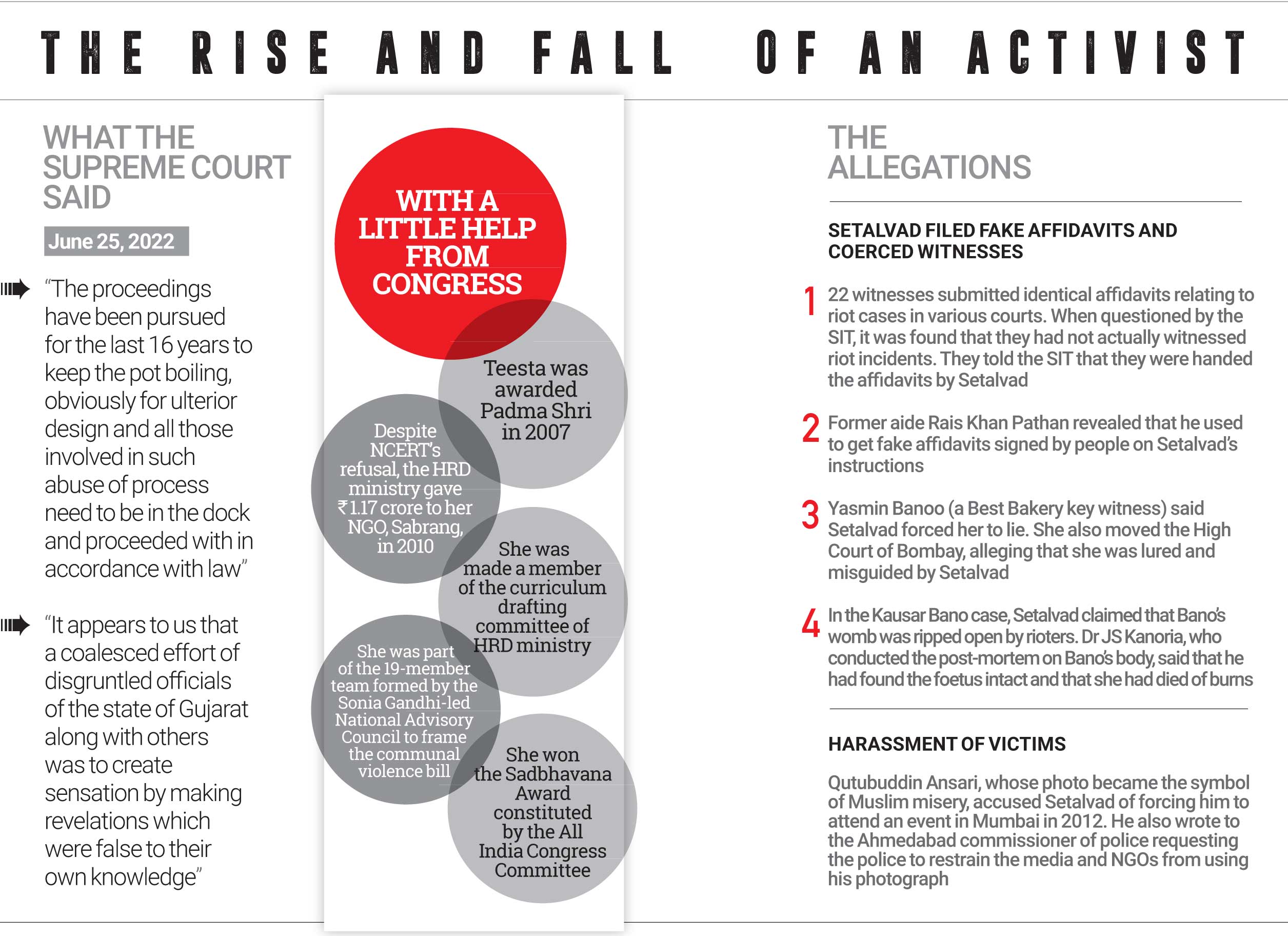
The plan was to embroil Modi’s closest ally, Amit Shah, in a legal tangle on the basis of a statement by an accused in the case and senior Crime Branch police officer DH Goswami. Goswami had made a sensational statement before an additional judicial magistrate that he had witnessed three senior police officials discussing an LeT operation two days before the Ishrat Jahan encounter. A deputy inspector general (DIG) of Gujarat Police, DG Vanzara, was apparently told to get the nod of the chief minister and his top man for the “execution” and he allegedly replied that he would contact “safed dadhi and kala dhadi” (alleged code words for Modi and Shah) on this.
The Congress leadership’s plot to derail Modi through Shah was to be executed even as former Deputy Prime Minister and BJP veteran LK Advani had triggered a battle within BJP over a possible consensus on the Gujarat chief minister being declared prime ministerial candidate.
As things turned out, the plot boomeranged with CBI Director Ranjit Sinha refusing to play ball in anticipation of an extension of his tenure in view of what was tipped to be an almost certain change in government at the Centre. A 2012 Supreme Court-monitored SIT probe gave Modi a clean chit and subsequently, a metropolitan magistrate’s court, too, refused to prosecute him. Modi survived these plots to thwart him and went on to win the 2014 Lok Sabha polls and become prime minister. BJP’s project to unravel the so-called Nehruvian consensus and his “Idea of India” had begun in earnest.
BUT SETALVAD’S OWN story as an alleged instrument of Congress and the Nehru-Gandhi family’s plan to derail Modi did not start in 2014. It began much earlier. The SIT told a city session’s court in Ahmedabad recently that Setalvad, former state Director General of Police (DGP) RB Sreekumar and a senior police officer named Sanjiv Bhatt were part of a plot to destabilise the Gujarat government and malign the state. The SIT also said that Setalvad had even been offered ₹ 5 lakh by late Congress stalwart Ahmed Patel after the 2002 riots. Sreekumar was accused of pressuring witnesses to reconcile with Setalvad after they had raised questions about her ethics and motives, maintaining that Modi would gain due to their infighting. Just a day after this, Setalvad’s former close associate, Rais Khan Pathan, maintained that in 2002 he had accompanied her to visit Patel, who had lauded her role in the post-demolition riots of 1992.
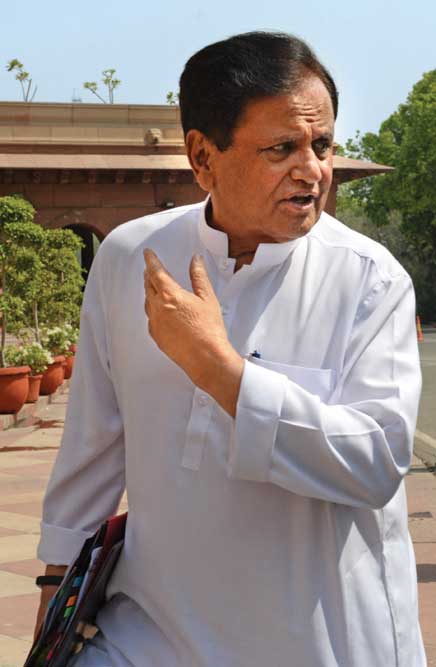
Pathan said Patel had given ₹ 5 lakh to Setalvad at the time and assured her that another ₹ 25 lakh was on its way from various sources apart from the Congress party. In February this year, Pathan tweeted saying he had parted ways with Setalvad in 2008 because her work ethics were highly suspect.
According to Pathan, during his association with her while working to secure justice for the riot-affected people of 2002, he had supplied Setalvad with several photographs of political leaders working with the rioting mobs, including not just BJP-Vishva Hindu Parishad (VHP) and Bajrang Dal activists but also those from Congress. But she had refused to release images of the latter and also those wherein Muslim mobs attacked Hindu shops and homes. When he took this up with her directly, Pathan said, Setalvad started accusing him, to the media, of being a VHP activist.
The SIT said Setalvad had been offered ₹ 5 lakh by Ahmed Patel. One of her former associates said Patel had assured her that another ₹ 25 lakh would come from Congress and other sources
Pathan, apparently, was not the only one on that list of former associates—including victims of the 2002 riots—whom Setalvad, as secretary of her NGO, Citizens for Justice and Peace (CJP), took advantage of to spread hatred against the Modi state government. Zaheera Sheikh, Yasmin Banoo Sheikh, Nanu Miyan, Imran Pathan and others, who were under her influence in the immediate aftermath of the riots, later retracted their statements. Fourteen people, who had taken refuge at Best Bakery owned by the Sheikh family in March 2002, were killed in the riots after the Godhra train burning. While the rest of the Sheikh family had recanted their testimony against 17 accused in the case (nine of these were sentenced to life imprisonment in 2006), Yasmin Sheikh, the key prosecution witness, moved the High Court of Bombay in 2011, alleging that she was “lured and misguided” by Setalvad into giving false testimony against the accused.
Setalvad’s proactive role at the forefront of a thriving and well-knit ‘industry’ of lobbyists, NGOs and anti-Modi activists dancing to the tune of the Congress leadership continued to advance its goals with the formation of the UPA government at the Centre in 2004. After this, she played a key role not just filing petitions against the Gujarat government in every case related to the 2002 riots across courts but also working consistently to spread false propaganda about the number of deaths in the riots. In doing this, she highlighted only those cases that related to Muslims and exerted pressure on witnesses to make false statements as well as misleading them into filing erroneous affidavits and false complaints. In fact, her role forced even the apex court to make adverse remarks about her activities. Along with petitioners in different cases and in the petition of the National Human Rights Commission of India (NHRC), she filed a number of petitions alleging faulty registration of FIRs, faulty investigations and persecution.
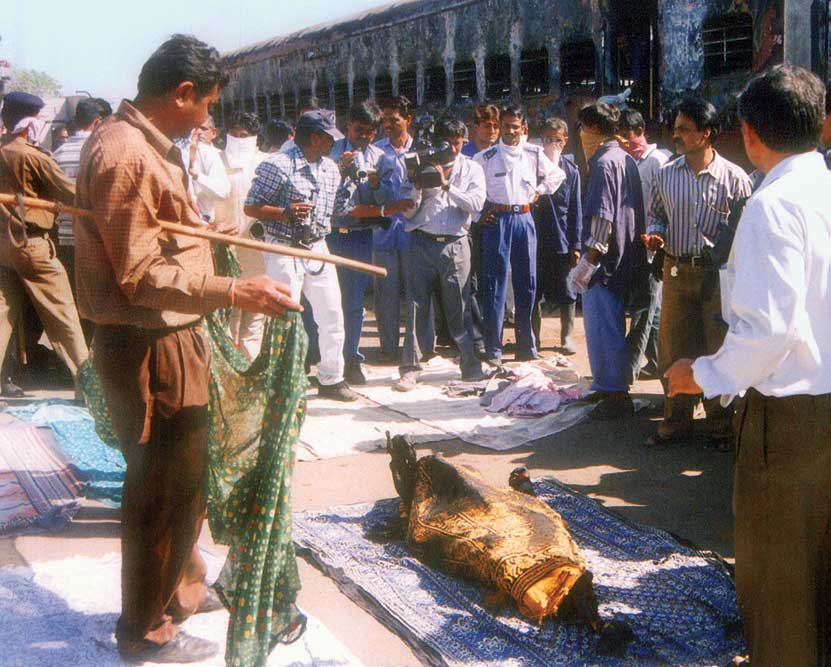
However, over time each of these cases unravelled. In the Naroda Gam case, for instance, Setalvad and other activists said for years that Hindu rioters, with the tacit approval of the state government, had ripped open a pregnant Kausar Bano’s womb. The SIT established that the doctor who had conducted the post-mortem, Dr JS Kanoria, had said that she had died of burns during the riots and her womb was intact. A key witness, Nanu Miyan Malik, claimed that a woman called Medina had been raped by rioters. But Malik later told the SIT in 2010 that he was tutored and pressured by Setalvad to say this. While Malik accused Rais Khan Pathan of including this in his statement without his knowledge, Medina Bano herself later told the SIT that she had not been raped at all. Imran Pathan and Rafiq Malik also told the SIT that they had not witnessed any rape as earlier stated by them but had been pressured to say so by Setalvad.
The Best Bakery case was transferred out of the state for trial on the basis of an alleged affidavit of a key witness, Zaheera Sheikh. The state government and the police were castigated about the alleged acquittal of the accused at the trial in the lower court. It was found later that the petition was submitted before the Supreme Court without the valid affidavit of the petitioner—namely, Zaheera Sheikh. When Sheikh’s alleged U-turn was brought up in the apex court, Setalvad produced the original signed copy of the affidavit without which the entire proceeding in the court had gone through earlier and the trial was transferred to Maharashtra. But both Zaheera Sheikh and Yasmin Sheikh later accused Setalvad of misguiding them into making statements against the accused for the deaths of many who took shelter in the bakery.
IN THE PANDARWADA CASE, the only one filed by the state police, Rais Khan Pathan, Ghulam Kharadi, Sikander Abbas, Kutub Shah Diwan, Jabir Mohammed and others deposed before a magistrate that all of them had been pressured by Setalvad to dig up graves near the Panam river close to Pandarwada without permission from the police and relevant authorities in December 2005. Arrest warrants were issued against all of them but Setalvad got a stay from the Gujarat High Court through one of the accused. He later withdrew his application in October 2010, leading to the arrest and, later, bail for all. On the basis of the statements of the rest, a chargesheet was formally filed against Setalvad who got anticipatory bail from the Pandarwada court. She subsequently ignored three summonses by the police. Rahul Singh, a senior journalist with Headlines Today, New Delhi, one of the witnesses in the case, told the police in his statement that he had visited Pandarwada at the time and neither Rais Khan Pathan, during interactions, nor Setalvad, on phone conservations, had mentioned that they had not taken permission from the police or from other authorities to dig up the graves.
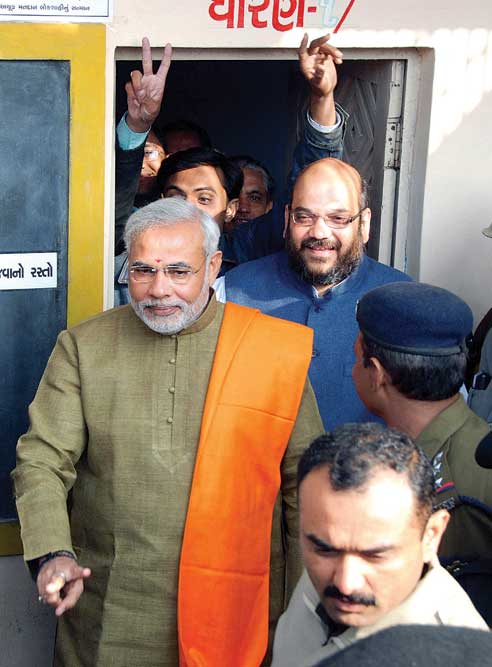
Worse, there were complaints of abduction of key witnesses and threats to them made by Setalvad and her then close aide Rais Khan Pathan. A 2005 complaint by Chetan Kumar Gore, a Vadodara resident, under various charges including the Arms Act, involved Setalvad and Pathan and others. It stated that Mohammed Vohra, Arif Yusufbhai Malek, Munna Malek, Ishaq, besides Setalvad and Pathan, had abducted Zaheera Sheikh and her brother Nafitullah using a Tata Sumo and a Tata Indica, threatened to kill them and whisked them away to Mumbai, confining them in a hotel. There, Setalvad and others forced the two to sign papers on the pretext of transferring property while, in truth, these were petitions to be filed before the Supreme Court.
Groups like Setalvad’s NGO spun convincing stories against the Modi state government, both at home and abroad, that demonised the chief minister. These groups first targeted Gujarat Police, then the SIT members from Gujarat, the public prosecutors, the fast-track judge, and then the entire SIT
In October 2010, Rais Khan Pathan filed a complaint against Setalvad accusing her of hacking his email account. All the affidavits filed in the apex court and other courts were prepared by Setalvad on behalf of the witnesses, he said, maintaining that she mailed fully prepared affidavits to his email accounts for signatures from witnesses. The witnesses were not allowed copies of these affidavits. In his application in the Sardarpura massacre case filed in the court of the additional sessions judge, Mehsana, to examine him as a prosecution witness, Pathan said that statements prepared by Setalvad and signed by several witnesses were in English and were incomprehensible to them.
Again, in the Naroda Gam case, an application was filed by Pathan before the additional sessions judge, Ahmedabad, to examine him as a prosecution witness. Here, the witnesses concerned retracted their original affidavits filed in the Supreme Court by Setalvad which, Pathan said, were engineered by her and were, again, false and inserted without their knowledge. In the Gulbarg Society case, he filed an application before the additional sessions judge, Ahmedabad that he should be treated as a prosecution/court witness because Zakia Jafri, widow of former Congress MP Ehsan Jafri, had lied to the court that she had not taken any help from Setalvad. Advocate Sohel Tirmizi, RB Sreekumar and Setalvad had prepared the affidavit on behalf of Zakia Jafri, he said. The court ordered the SIT to record his statement on November 3, 2010. Here, too, Setalvad got another close associate, Imtiaz Pathan, to file a special leave petition (SLP) in the Supreme Court for a stay on the order. Pathan filed an intervention application and, fearing that the court could pass an adverse order, Setalvad withdrew the application.
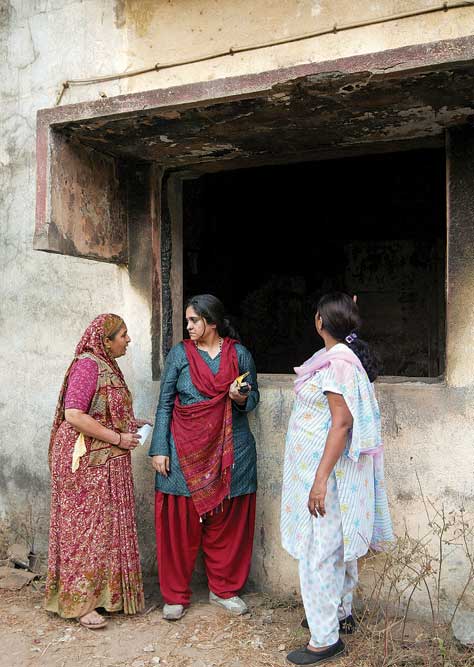
Pathan also filed an affidavit before the Nanavati-Shah Commission in 2010 requesting stern action against Setalvad for misleading various courts and forcing innocent victims and witnesses to file false affidavits which could lead to their arrest in ongoing cases. He gave his testimony to the commission on November 24, 2010. Buttressing this was an inquiry against her demanded by Zahid Kadri, an educated and well-placed leader in the Muslim community of Ahmedabad. In his affidavit to the Chief Justice of India, he accused Setalvad of using him for her selfish goals while pretending to get justice for his son who was killed in police firing in 2002. Setalvad misguided poor Muslims in the name of religion and justice, he maintained.
Setalvad’s allegation that the state police were not registering politically inconvenient FIRs proved to be false. The state had made arrangements to register FIRs at relief camps and 4,274 cases were filed. Her version of events that accused Hindus were not arrested was wrong too. As of November 30, 2010, out of 26,974 accused individuals who had been arrested, 19,175 were Hindus. From the relief camps, 69 FIRs were registered at Naroda, 23 at Madhavpura and one at Meghaninagar
That Setalvad had, through decades, mastered the art of milking a thriving ‘peace and harmony industry’ by preying on the victims of the 2002 riots and leveraging political interests to craft an aggressive anti-Modi discourse—both in India and abroad—was apparent when she was chastised for taking her issues to Geneva even as the Supreme Court was considering those. In January 2011, the apex court was compelled to express its displeasure at Setalvad rushing to international organisations with her story while matters were pending before it. In its order on (Criminal) Writ Petition 2003, the court observed with displeasure that some letters in a trial pertaining to the Meghaninagar police station (2002) had been rushed to UNHRC in Geneva by her CJP. Caught red-handed, Setalvad, through her advocate Kamini Jaiswal, had assured the court that this would not happen again.
Setalvad’s allegation that the state police were not registering politically inconvenient FIRs also proved to be false. The state government had, in fact, made arrangements to register FIRs at relief camps after the riots and 4,274 cases were filed in the entire state. Her version of events that accused Hindus were not arrested proved to be wrong as well. As of November 30, 2010, out of 26,974 accused individuals who had been arrested, 19,175 were Hindus. From the relief camps, 69 FIRs were registered at Naroda, 23 at Madhavpura and one at Meghaninagar. Nor were her allegations that the police indulged in faulty investigations of cases true. The state government appointed senior police officers of DIG and IG ranks to supervise all the major riot cases and thorough probes were carried out.
Trials had begun only after the Supreme Court was satisfied with the investigation. Fast-track court judges were appointed directly by the Gujarat High Court and public prosecutors were appointed by the government on the recommendation of the chairman of the SIT as directed by the apex court.
Despite this, Setalvad’s CJP kept complaining about the investigation carried out by the SIT and because of constant allegations, members of the SIT from Gujarat were kept out of the probe. Though public prosecutors were appointed on the recommendations of the SIT, complaints were made, targeting specific prosecutors. Some of the public prosecutors resigned from the cases. When the trial for the Gulbarg Society case was about to end, complaints were made against the fast-track judge who was then removed by an administrative order of the high court.
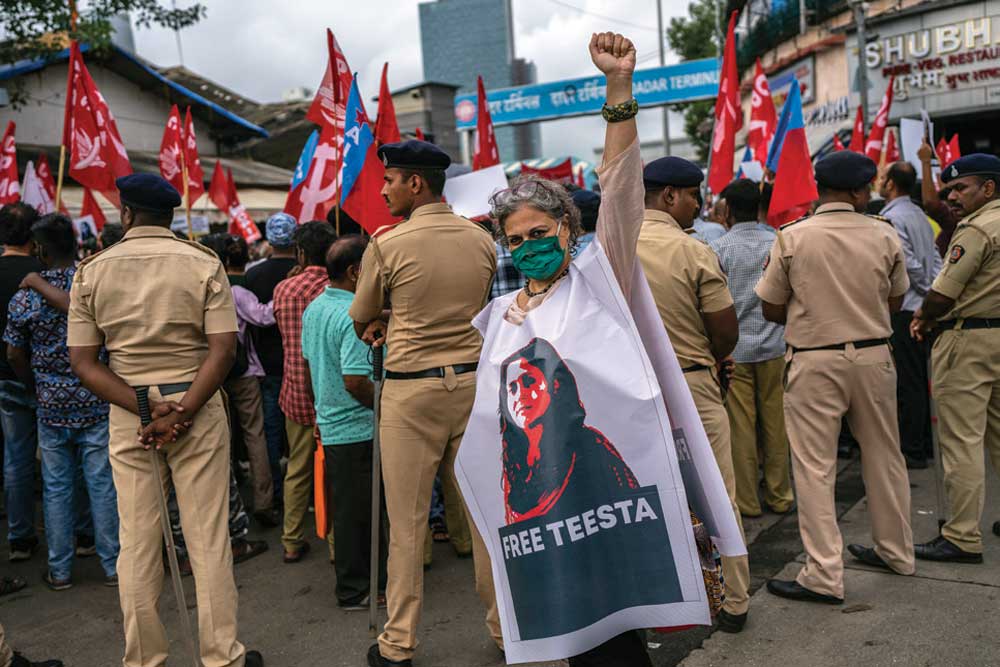
Setalvad had sent witnesses with pre-typed copies of statements to the SIT, which even recorded that these witnesses had stated many facts at cross-purposes with the typed statements. Vested interest groups and lobbyists with a hidden agenda, like her NGO CJP, emboldened by a conducive, even supportive, political environment in New Delhi, continued to spin convincing narratives against the Modi state government, both at home and abroad, that demonised the chief minister. He was barred from visiting the US and other countries for years as visas were denied to him in view of this propaganda. In perfect synchronisation, these groups first targeted Gujarat Police, then the SIT members from Gujarat, the public prosecutors, the fast-track judge, and then the entire SIT as part of their larger objective.
Contrary to Setalvad’s story, the state government had not filed any case except one where she and others had dug up the graves of riot victims. Most of the cases were filed by private individuals. That, however, did little to stop the anti-Modi spin in dispatches from Setalvad’s camp. According to the version propagated across India and abroad, the state of Gujarat was on fire and extremely unsafe for minorities and dissenters against the government. As a matter of fact, only 95 police station areas were under curfew during the riots and almost the entire Kutch and Saurashtra regions, and South Gujarat, had remained unaffected.
Directly responding to Setalvad’s pleas of threat and victimisation by the state government, the Supreme Court, through an order on April 21, 2004, provided her security via the Centre. This was done even as no formal complaints were made to the court or the state police about any threat to her. With the process of law—that she evidently abused to suit her ends—now catching up with her, Setalvad has begun dubbing the developments as deliberate victimisation and a miscarriage of justice. But it is she who is to be blamed for the inordinate delay in the start of trials in major riot cases. Several were stayed as long ago as 2003 and, after a lot of effort, restarted in 2009.
The most thorough and well-monitored of probes by the apex court into the 2002 riots has failed to prove even a remote involvement of the Gujarat government and the then chief minister and current prime minister, Narendra Modi, as alleged by CJP and its supporters. Compared to the 1984 Delhi riots, where there was clear indication of the complicity of senior leaders of the ruling Congress in targeting only those from the Sikh community, this claim proved false and weighed on every parameter vis-à-vis Gujarat. Between 2002 and 2022, it has been a long haul in which the tables have turned. And for Setalvad, finally, the chickens seem to have come home to roost.

/wp-content/uploads/2025/01/Cover_Kumbh.jpg)









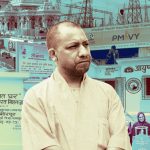

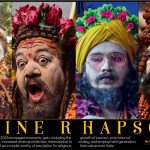

More Columns
The lament of a blue-suited social media platform Chindu Sreedharan
Pixxel launches India’s first private commercial satellite constellation V Shoba
What does the launch of a new political party with radical background mean for Punjab? Rahul Pandita